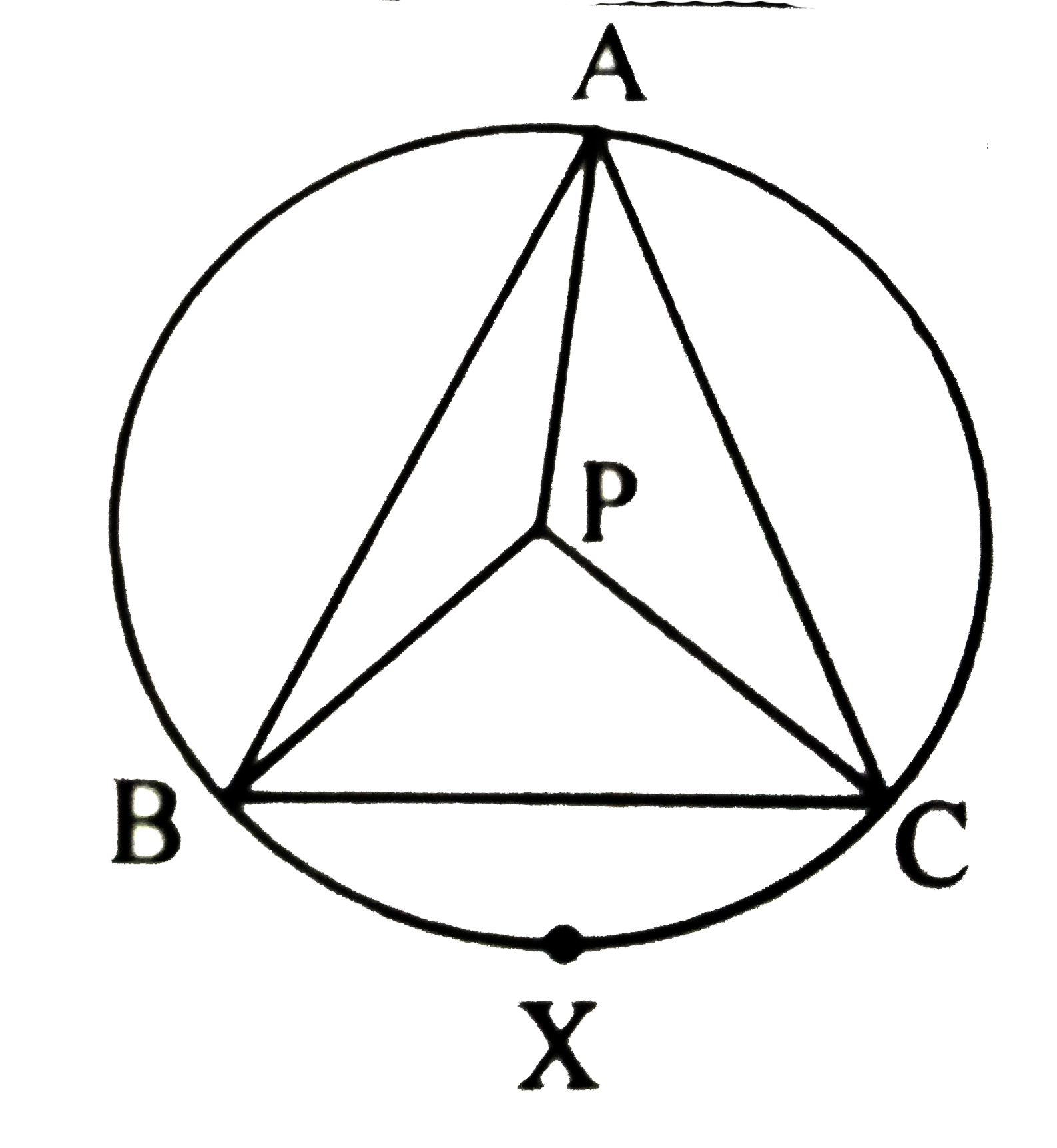If in a ΔABC,'S' is the circumcentre then :
S is equidistant from all the vertices of a triangle
S is equidistant from all the sides of a triangle
AS, BS and CS are the angular bisectors
AS, BS and CS produced are the altitudes on the opposite sides.
The correct Answer is:A
To solve the question regarding the circumcenter S of triangle ABC, we will analyze the properties of the circumcenter and its relationship with the vertices of the triangle.
1. Understanding the Circumcenter:
- The circumcenter S of a triangle is defined as the point where the perpendicular bisectors of the sides of the triangle intersect. It is also the center of the circumcircle, which is the circle that passes through all three vertices of the triangle.
Hint: Remember that the circumcenter is equidistant from all vertices of the triangle.
2. Equidistance from Vertices:
- Since S is the circumcenter, it is equidistant from all three vertices A, B, and C. This means that the distances SA, SB, and SC are equal. We can denote this common distance as R (the circumradius).
Hint: Visualize the circumcircle; all points on the circle are at the same distance from the center.
3. Circumcircle:
- The circumcircle is the circle that passes through points A, B, and C. The radius of this circle is the distance from the circumcenter S to any vertex of the triangle.
Hint: The circumcircle's radius is crucial in understanding the relationship between the circumcenter and the triangle's vertices.
4. Angle Bisectors:
- The segments AS, BS, and CS are not necessarily the angle bisectors of triangle ABC. The angle bisectors are segments that divide the angles at vertices A, B, and C into two equal parts, and they intersect at the incenter, not the circumcenter.
Hint: Differentiate between angle bisectors and segments connecting the circumcenter to the vertices.
5. Altitude:
- The segments AS, BS, and CS are not produced to the altitudes on the opposite sides. The altitudes of a triangle are the perpendicular segments from each vertex to the line containing the opposite side, and they intersect at the orthocenter, which is different from the circumcenter.
Hint: Recall the definitions of altitudes and how they relate to the triangle's vertices and sides.
Conclusion:
The correct statement regarding the circumcenter S is that it is equidistant from all the vertices of triangle ABC. The other statements regarding angular bisectors and altitudes are incorrect.
- The circumcenter S of a triangle is defined as the point where the perpendicular bisectors of the sides of the triangle intersect. It is also the center of the circumcircle, which is the circle that passes through all three vertices of the triangle.
- Since S is the circumcenter, it is equidistant from all three vertices A, B, and C. This means that the distances SA, SB, and SC are equal. We can denote this common distance as R (the circumradius).
- The circumcircle is the circle that passes through points A, B, and C. The radius of this circle is the distance from the circumcenter S to any vertex of the triangle.
- The segments AS, BS, and CS are not necessarily the angle bisectors of triangle ABC. The angle bisectors are segments that divide the angles at vertices A, B, and C into two equal parts, and they intersect at the incenter, not the circumcenter.
- The segments AS, BS, and CS are not produced to the altitudes on the opposite sides. The altitudes of a triangle are the perpendicular segments from each vertex to the line containing the opposite side, and they intersect at the orthocenter, which is different from the circumcenter.
The correct statement regarding the circumcenter S is that it is equidistant from all the vertices of triangle ABC. The other statements regarding angular bisectors and altitudes are incorrect.
Topper's Solved these Questions
- GEOMETRYBook:ARIHANT SSCChapter:GEOMETRYExercise:INTRODUCTORY EXERCISE - 12.3
Explore 28 Videos
- GEOMETRYBook:ARIHANT SSCChapter:GEOMETRYExercise:INTRODUCTORY EXERCISE - 12.4
Explore 10 Videos
- GEOMETRYBook:ARIHANT SSCChapter:GEOMETRYExercise:INTRODUCTORY EXERCISE - 12.1
Explore 45 Videos
- FUNDAMENTALS Book:ARIHANT SSCChapter:FUNDAMENTALS Exercise:TEST OF YOU - LEARNING - 2
Explore 40 Videos
- HCF AND LCMBook:ARIHANT SSCChapter:HCF AND LCMExercise:Exercise Higher Skill Level Questions
Explore 18 Videos
Similar Questions
Knowledge Check
If in a ΔABC,'S' is the circumcentre then :
AS is equidistant from all the vertices of a triangleBS is equidistant from all the sides of a triangleCAS, BS and CS are the angular bisectorsDAS, BS and CS produced are the altitudes on the opposite sides.In ΔABC , O is the circumcentre of the triangle and ∠BOC=60∘ , then what will be the value of ∠BAC ?
AA)90∘BB)30∘CC)60∘DD)45∘The diagonal of the square field measures 50m. The area of square field is?
Aa. 1250m^2Bb. 1200m^2Cc. 1205m^2Dd. 1025m^2
The orthocentre of the ΔABC is B and the circumcentre is S(a,b). If A is the origin, then the coordinates of C are
View SolutionCircumcentre of triangle
View SolutionIn the adjoining figure, P is the circumcentre of the ΔABC.m∠APC=118∘ and m∠PBC=45∘ , then find:
(i) m(arc BXC)
(ii) m(arc BCA)

View SolutionIf S is the circumcentre, O is the orthocentre of ΔABC, then ¯¯¯¯¯SA+¯¯¯¯¯SB+¯¯¯¯¯SC equals
View SolutionABC is an equilateral triangle and O is its circumcentre, then the ∠AOCis
View Solution